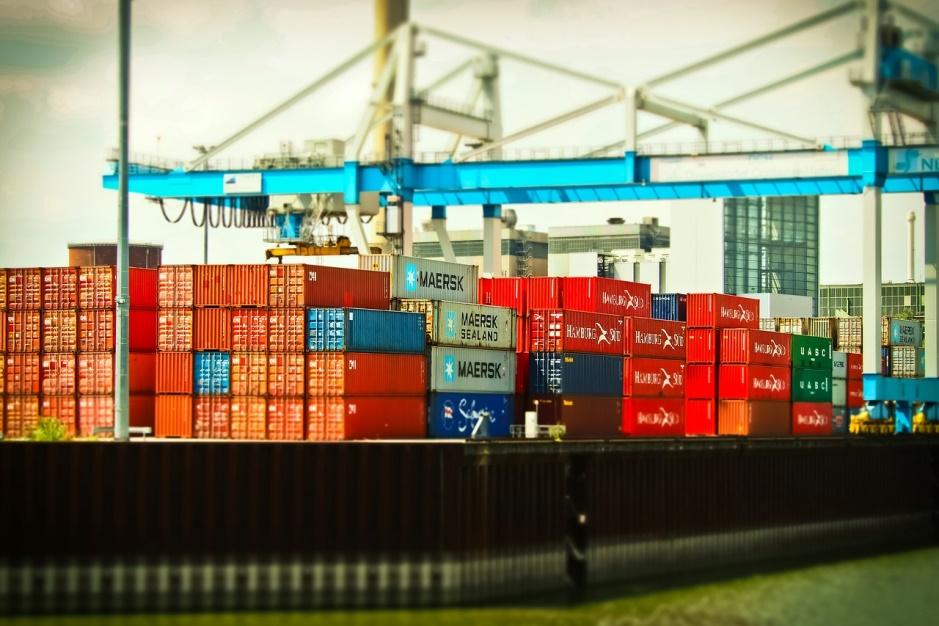The International Chamber of Commerce (ICC), the world’s rule making body for international commerce terms (incoterms), are set to release new rules for incoterms this Autumn, the first time they have been revised in a decade. With numerous bodies and organisations speculating, pre-selling courses and providing information on fake incoterms, TFG gets behind incoterms 2020, why there are rumours, what’s fake, and what’s true.
1. Incoterms (international incoterms) are the governing rules set by the International Chamber of Commerce (ICC)
1919 saw the creation of the International Chamber of Commerce, by 1928 they had conducted multiple studies on current trading terms employed by merchants and by 1936, introduced the following rule set:
If we move 74 years and 6 rule set revisions into the future, we arrive at the most current set of Incoterm rules – 2010. Through multiple developments in rail trade, air trade, legislation and various other aspects of global trade, the ICC’s set of rules have contributed toward the facilitation of trillions of dollars’ worth of trade.

2. Right now, the current incoterms are Incoterms 2010
If you ever see a set of rules published for ‘incoterms 2019’, ‘incoterms 2018’, ‘incoterms 2017’ etc., they are wrong. Ignore them!
Incoterms 2010 are now the accepted and current set of trading rules. The 9-year-old set of rules are comprised of the following:
The above terms have been a crucial element in the development and performance of global trade over the last 80 years, eliminating many of the communicational barriers that are associated with international trade. But what do these stand for?
|
EXW – Ex Works |
In this scenario, the seller is not responsible for the loading of the goods – only the deliverance of the goods to the disposal of the buyer. |
|
FCA – Free Carrier |
This arrangement entails the seller holding responsibility for delivering the goods to the carrier at a specified location, cleared of customs. FCA is the most common incoterm used out of the set. |
|
CPT – Carriage Paid To |
This arrangement shows the seller holding responsibility for the delivering of the goods to an agreed place, and also the costs associated with the delivery of said goods. |
|
CIP – Carriage and Insurance Paid To |
CIP’s contract of liability is very similar to that of CPT’s in that the seller is still liable for delivering the goods to a named location and the associative costs, but under CIP the seller must also cover insurance against the buyer’s risk of loss or damage to the goods during transport. The insurance requirement only necessitates the minimum amount of coverage but does not limit the amount if the buyer were to want further protection. |
|
DAT – Delivered at Terminal |
In this case, the world ‘Terminal’ refers to the following; Quay, Warehouse, Container yard or road, rail or air cargo terminal. In this Incoterm, delivery has happened once the goods are unloaded from the transport they arrived in, and are at the disposal of the buyer at the named terminal within the chosen location. |
|
DAP – Delivered at Place |
Delivered at Place refers to a situation in which the seller has delivered the goods once they are placed on the mode of transport, ready for unloading and carriage at the named place/ destination. |
| DDP – Delivered Duty Paid |
This scenario is slightly more responsibility for the seller. Delivered Duty Paid is called so because the seller must deliver the goods by placing them at the disposal of the buyer, cleared for export and import and ready for unloading at the named location. |
The above Incoterms are all rather broad, for good reason. These terms are used universally, across various industries and modes of transportation.
The following terms, however, are specific to sea and inland waterway goods transportation:
|
FAS – Free Alongside Ship |
With this agreement, goods are considered delivered once they are placed alongside the vessel of transport, which was nominated by the buyer. The risk of loss or damage is transferred to the buyer once the goods are alongside the vessel, and the buyer then assumes all responsibility. |
|
FOB – Free on Board |
FOB refers to the arrangement in which the seller delivers the goods on board a vessel nominated by the buyer at the chosen port OR procures the goods already delivered so. |
|
CFR – Cost & Freight |
With CFR, the seller delivers the goods once they are onboard the chosen vessel of transport, and is also responsible for the costs and freight which are necessary to transport the goods to a chosen, named port. |
|
CIF – Cost, Insurance & Freight |
CIF is similar to the above Cost and Freight in that the seller is still responsible for the delivery of goods on board the chosen vessel, and assume liability for the costs and freight associated with bringing the goods to the chosen port. However, with CIF the seller is also responsible for the contracting of insurance to cover the buyer’s risk of loss or damage. Much like CIP, the insurance required via the Incoterm set is minimal, and should be either agreed with the seller prior to transport or arrange their own coverage. |
3. Incoterms 2020 are changing
As mentioned previously, the set of Incoterm rules have been subject to revision multiple times since their introduction in 1936 – and quite rightly so. If one is to consider the way and amount global trading patterns, structures and relationships have changed and formed over the last 80 years, you would begin to understand the necessity for these rules.
Within the past 10 years since the last rule revision, there have been vast changes to the infrastructure and technology with which the global markets use to trade which is why the ICC has consulted their global network and started the drafting process for the 2020 rule set – scheduled to be released to the world during 2019 (the ICC’s centennial year) and will come into effect January 2020.
Incoterms 2020 Rules PDF

A comprehensive 96 page guide on Incoterms® 2020, to be used in conjunction with The International Chamber of Commerce’s (ICC) new book, INCOTERMS® 2020.
Written by Bob Ronai CDCS, a member of the ICC’s Incoterms® 2020 Drafting Group, in partnership with Trade Finance Global (TFG). This 94 page guide provides an article by article commentary on Incoterms® 2020.
- Introduction and layout of the rules
- A1 / B1: GENERAL OBLIGATIONS
- A2 / B2: DELIVERY
- A3 / B3: TRANSFER OF RISK
- A4 / B4: CARRIAGE
- A5 / B5: INSURANCE
- A6 / B6: DELIVERY/TRANSPORT DOCUMENT
- A7 / B7: EXPORT/IMPORT CLEARANCE
- A8 / B8: CHECKING / PACKAGING / MARKING
- A9 / B9: ALLOCATION OF COSTS
- A10 / B10: NOTICES
- Advantages and Disadvantages of each rule and whether they work with LCs
- Rules for Any Mode or Modes of Transport
- Rules for Sea and Inland Waterway Transport
- Conclusions





























